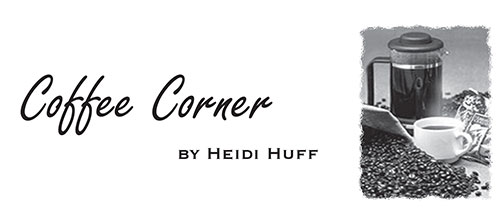
|
Broad Ripple Random Ripplings

The news from Broad Ripple
Brought to you by The Broad Ripple Gazette
(Delivering the news since 2004, every two weeks)

|
| Brought to you by: |

|

|

|

|

|

|
Converted from paper version of the Broad Ripple Gazette (v03n09)
Coffee Corner - To Tea or Not to Tea? - by Heidi Huff
posted: May 05, 2006

To Tea or Not to Tea?
"Black or White tea?" This is what you will be asked when you order iced tea at Hubbard and Cravens. Ordering hot tea can be much more complicated. Other tea retailers may ask you for your preference of any number of combinations containing the tea types Green, White, Black, Oolong, Red, or Herbal. It is my assumption that the general public has not been informed of the differences between the types of tea. It is up to your local barista to attempt to define these divisions. Unfortunately they may speak a more specific tea language than you or even I may understand. Or even more unfortunately, they may not know the differences at all.
All tea actually comes from the same variety of evergreen plant, Camellia Sinensis. Generally, only the top two leaves and bud of each tea branch is picked. Now that's specific! Tea, like coffee, varies according to the region in which it is grown and how it is processed. For the most part tea is grown in China, India, Japan, Sri Lanka, and more recently, Africa. The three most common types of tea are green, black, and oolong; most of us common tea folk are familiar with these. As you see above, there are also White, Red, and Herbal teas to choose from.
Green teas are produced by steaming freshly picked leaves that are not allowed to oxidize at all; black teas are withered or dried in the sun. Then they are rolled and crushed into machines to liberate the juices that then oxidize. Oolong tea is processed somewhere in the middle between black and green. Oolongs are allowed to oxidize, unlike green teas, but they do not ferment as long as a black tea would. White teas are very rare and delicate and are produced only in the Fujian province of China. It is neither steamed nor fermented, but only allowed to wither instead.
To address the question of "not to tea", we can examine Red and Herbal teas, which really aren't even teas at all. To technically be a labeled "tea" the mixture must contain leaves of the actual tea plant. Neither Red nor Herbal teas posses this quality. Red tea, or Rooibos as it is less commonly called, is a fairly new product to the tea market. It is brewed from the leaves of the Aspalathus linearis plant from South Africa. It is often a tea substitute because it, too, contains many of the antioxidants that tea does but is naturally caffeine free. Rooibos is the main ingredient in H&C's Crimson Berry Tisane. Herbal teas, like the common Peppermint or Chamomile, are any blend of herbs, spices, plants, flowers, or fruits that are brewed like tea.
For those of you seeking a decaffeinated option, Tisanes or Herbals are great. Don't forget that your local tea retailers may carry teas that are processed to become decaffeinated. They may or may not have the word decaffeinated in the name like China Black Decaf or Sweet Ginger Peach, respectively. It is also possible to mostly decaffeinate tea by brewing it for a mere 40 seconds, then discarding the water and re-steeping the same leaves. Bring on the tea! (and the not-tea!)
heidi@broadripplegazette.com

|

|

|
| Brought to you by: |

|

|

|
| Brought to you by: |

|

|

|


